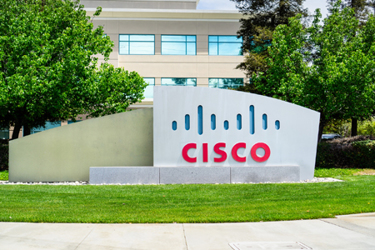What Do You Know, Cisco? Insight On Smart Water And IoT

By Kevin Westerling,
@KevinOnWater

Cisco Systems is one of the most recognizable company names in networking, likely known to most water and wastewater utility personnel, but their visibility and relevance in the water space — with the onset of digitalization and the Internet of Things (IoT) — has even more room to grow. Cisco's technologies and expertise position the company to take a leading role as ‘smart water' becomes the norm.
To help utilities understand what digital transformation entails, I spoke with Sielen Namdar, Industry Solutions Executive with Cisco’s Connected Cities & Communities. A professional engineer with bachelor's and master's degrees in Civil Engineering from the University of Washington, Sielen joined Cisco in 2018 and currently leads their Global Smart Water Strategy. Prior to that, she spent 20 years at Jacobs Engineering (legacy CH2M) and was co-founder of CH2M’s Smart Cities Initiative.
While Sielen's knowledge and experience with IoT and data analytics obviously runs deep, the following Q&A is in service to the less initiated — an education on ‘smart’ operations to encourage greater adoption.
Cisco says it provides "the secure networking backbone" for many water operations. What are some examples of operations you enable?

Cisco offers secure digital solutions for the entire water cycle. Our solutions fit within three key areas: SCADA modernization; metering for water distributions systems or AMI [advanced metering infrastructure]; and monitoring for drinking water, wastewater, and stormwater quality, as well as flood levels. In all these use cases, Cisco technology provides the networking backbone that enables the secure and reliable movement of real-time data from the sensor/meter/device level to the application layer. In addition, we provide secure IT/OT integration, which allows for asset visibility and optimization and helps water operators derive timely business insight to improve efficiencies.
Can you describe the LoRaWAN network and its relevance?
LoRaWAN, which stands for long-range wide-area network, is an unlicensed spectrum radio that is well-suited for IoT use cases, especially for monitoring distributed assets. LoRaWAN offers built-in security and functions with battery-powered endpoints with up to 10 years of battery life. LoRaWAN networks work very well for water monitoring and metering use cases and are usually more cost-effective than the competing NB [narrowband] IoT technology. Cisco is the founding member of LoRa Alliance®, a non-profit association that promotes the success of the LoRaWAN® protocol. Cisco’s water monitoring use case is built on LoRaWAN technology. We also offer a metering solution that leverages LoRaWAN.
What are the cybersecurity concerns for smart water, and how are they addressed and alleviated?
As water utilities modernize and start to implement smart water and IoT applications, their systems are no longer air-gapped, opening the door to all kinds of hacks. That’s why the American Water Infrastructure Act (AWIA) of 2018 requires community water systems serving more than 3,300 people to develop or update risk assessments and emergency response plans. The law specifies the components that the risk assessments must address, and for the first time it includes cybersecurity. The current trend of remote workforce and remote operations for business continuity is further adding to the cyber-risk challenge. One thing that is clear is that water utilities, as well as other critical infrastructure organizations, will need to build resilience related to cybersecurity. Cisco provides best-in-class water cybersecurity solutions for the integrated IT/OT environments, and collaborates with many water utilities to build resilient cybersecurity protocols.
What is meant by the "intent-based approach" to digital solutions that Cisco employs?
As users, devices, and distributed applications have grown in number, the networking environment has become exponentially more complex. Intent-based networking (IBN) transforms a hardware-centric, manual network into a controller-led network that captures business intent and translates it into policies that can be automated and applied consistently across the network. The goal is for the network to continuously monitor and adjust network performance to help assure desired business outcomes. Cisco is a leader in this field.
Where are the IoT sensors found in a water or wastewater network?
Water IoT sensors can be placed on various assets such as pipes, pumps, valves, etc., and in bodies of water including rivers, lakes, wetlands, and reservoirs, among others.
Where is that data transmitted — to operator dashboards, other equipment, etc. — and does it matter if the endpoints are from different vendors?
Cisco networks enable the secure movement of data from any sensor to any application and platform layer. When it comes to sensors and platforms/dashboards, Cisco is completely vendor-agnostic and works with a large pool of ecosystem partners.
Did the COVID-19 crisis shed any light on the value of smart water operations. If so, how?
Absolutely. Water utilities, along with many other organizations, had to shift to remote workforce in a matter of days, and they recognized the need for remote operations as teams on the ground were facing major health risks. In addition, water revenue started to go down as cities shut down, necessitating utilities to operate and maintain their facilities with reduced revenue. Since COVID-19, water utilities have recognized that prioritizing and investing in smart water technologies is one of the key foundations of building a resilient future. One of the most important benefits of digital water is asset optimization, which can bring the much-needed ROI to water utilities in these challenging times.
If a utility wanted to start small, how or where would you suggest they build their smart-water foundation?
The important thing is to get started, no matter how small. Utilities can identify their key areas of challenge and goals that they want to achieve, then build small pilots for specific use cases. The pilots can then be scaled across the utility to make a meaningful impact. Cisco offers two sources of funding — CDA and Lighthouse — to accelerate adoption of smart water. We partner with water utilities and build innovative pilots leveraging these funds, setting the stage for future scaling of these solutions globally.
What can you say about the growth of digital technologies at water utilities with respect to overcoming barriers of adoption?
The key element to consider is that business as usual is not sustainable, especially in light of the current crisis. There is not enough funding to solve all challenges through building new gray infrastructure, and a large portion of water utility operations staff is about to retire in the next five years, leaving a large knowledge gap. Technology has the power to help optimize assets and bring business insight to decision-makers. It also contributes to strong ROI and building efficiencies. I believe that barriers to adoption will diminish in the near future given the key challenges we face and the clear benefits of technology in water operations.
